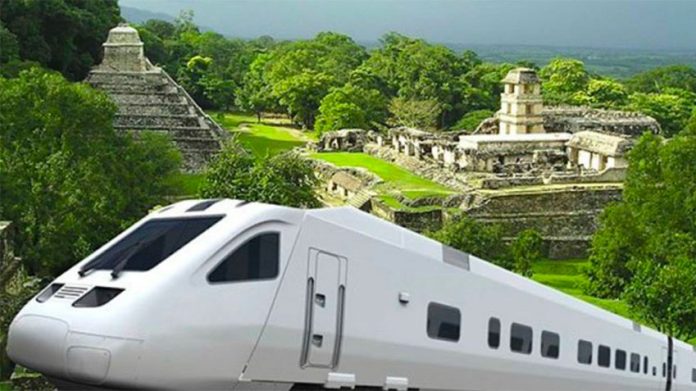A public consultation on the Maya Train project found more than 92% support among citizens of the five states through which it will run.
But before Sunday’s vote was held, around 20 activists, community landowners, residents and politicians who spoke with the newspaper El Universal in Quintana Roo and Campeche said there was not sufficient information about the project to decide whether it should be built or not.
Indeed, the general director of the National Tourism Promotion Fund, which is in charge of the 120-billion-peso (US $6.3-billion) project, admitted last week that the exact route of the railroad has not yet been determined and that technical and economic viability studies have not yet been completed.
All reports about the project will be available in January, Rogelio Jiménez Pons told a press conference in Tulum, Quintana Roo.
A lot of the concern about the project is concentrated in areas through which the train will run but where there are no existing tracks.
That includes municipalities in Quintana Roo and Campeche between Tulum in the former state and Escárcega in the latter. The Maya Train project intends to build about 500 kilometers of track between the two locations.
Tulum Mayor Víctor Mas told El Universal that he supported the rail project but conceded that there is a lack of detail about it.
“As far as I know, there are three companies working in the municipality, studying the technical part [of the project] . . . soil mechanics, and the environmental part but we won’t have concrete information until a few months from now,” he said.
Activists from the environmental group Tulum Sostenible (Sustainable Tulum) said that such information is vital in order to reach an informed opinion about whether the project should go ahead.
“Tulum is an area of many cavities, an enormous network of subterranean rivers and we’d like to know how they’re going to build such heavy infrastructure over such fragile territory,” said Karla Acevedo.
The president of the Tulum Hotel Association said that more information is needed about the finances of the project in order to determine whether it will be economically viable.
Although the government claims it will boost tourism to Mexico’s southeast, David Ortiz said he doesn’t think the train will attract more visitors to Tulum. Whether higher numbers of tourists will visit other destinations in the region after the project is completed remains to be seen, he said.
In Campeche, an ecologist who has studied the effect of infrastructure projects on the natural environment told El Universal that construction of the new railroad in the municipality of Calakmul could have an adverse effect on flora and fauna.
Alberto González said the Maya Train proposes construction of “wildlife passages” that will enable wild animals to cross from one side of the tracks to the other but he added that “it’s not clear if the animals will use them or not – there are no conclusive studies.”
Calakmul Mayor Luis Felipe Mora Hernández expressed concern about the damage that construction could cause to the Calakmul Biosphere Reserve although he added that local authorities didn’t want to “obstruct” the project.
Sebastián López Vázquez, a community landowner and director of an indigenous persons’ organization in Calakmul, neatly summed up the sentiment expressed by many others in southeast Mexico when asked their opinion.
“They [the government] haven’t given us information all year and that’s what we need first to know the benefits and the bad things.”
After Sunday’s consultation, Jiménez Pons said that work will begin on the project in late March or early April. President López Obrador says the project will generate employment and contribute to greater economic prosperity in the southeast.
He has also said there will be no net negative environmental impact on the region, which is full of jungle, wetlands, wildlife reserves and archaeological sites, because thousands of trees will be planted to compensate for those that are felled during construction of the railroad.
Source: El Universal (sp)
